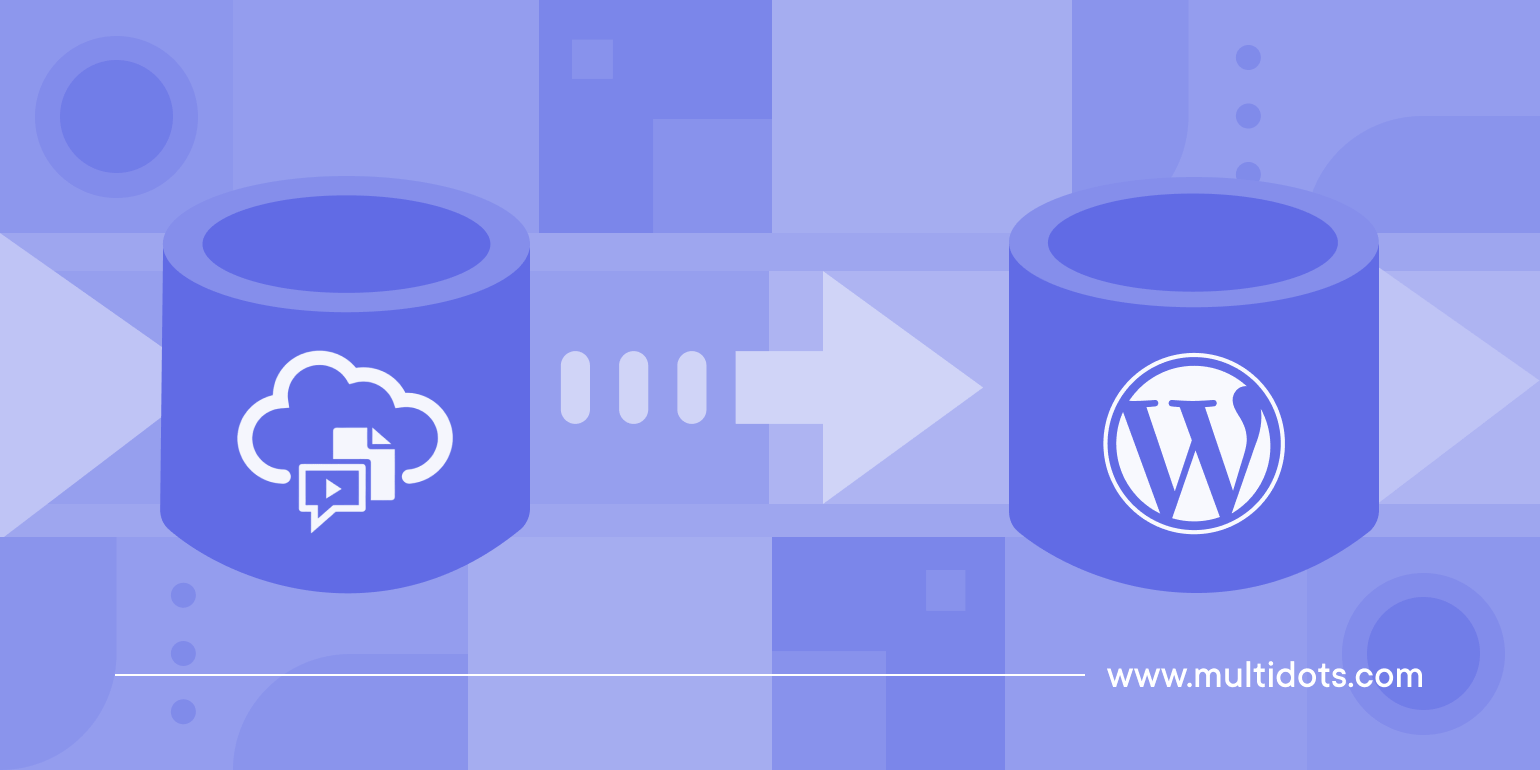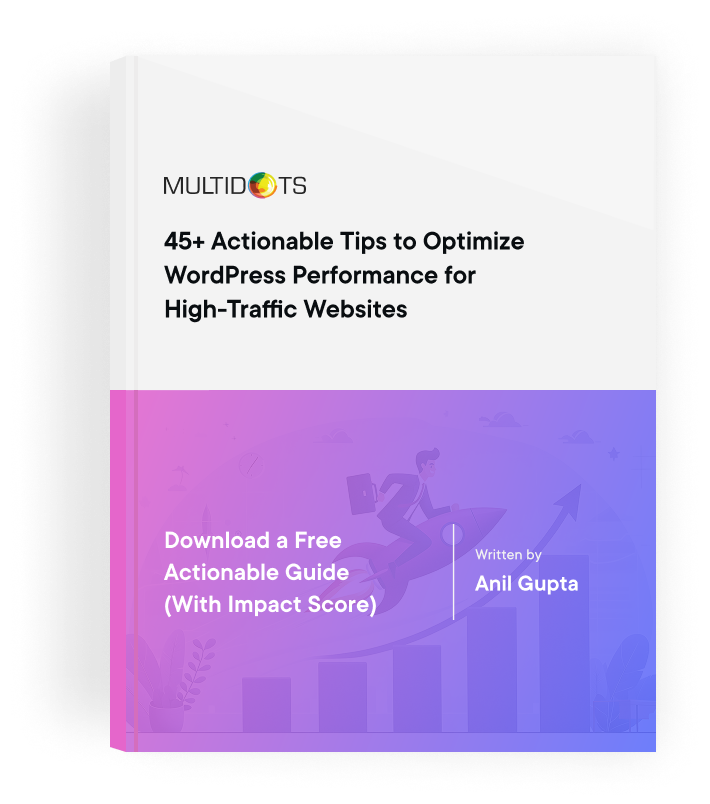How to Preserve Your SEO When Migrating from OCM to WordPress
Avoid losing search rankings when transitioning from Oracle CMS to WordPress.

Table of Contents
When businesses think about moving their content management system (CMS) from Oracle Content Management (OCM) to WordPress, a common worry that comes up is the potential loss of organic traffic. This concern is understandable, as a migration that isn’t managed well can lead to issues with site indexing and can affect search engine rankings negatively.
The key to a successful migration lies in a well-structured process that not only mitigates risks but also preserves—and potentially enhances—the SEO value of your content.
Understanding the specific reasons for traffic loss and planning accordingly is crucial to preventing a decline in your site’s visibility online during the transition.
In this post, we'll walk you through the typical reasons for traffic loss during migrations and share some helpful strategies to steer clear of these challenges.
Common Reasons for Traffic Loss
When migrating from Oracle Content Management (OCM) to WordPress, or any other CMS for that matter, several factors can lead to a loss of organic traffic.
Let’s understand the most common issues.
Technical Issues
For example, consider broken links. If the migration process doesn’t fully consider old URLs, we might end up with broken links. This can create a frustrating experience for users and could also lead to lower search engine rankings.
Or, using the wrong type of redirect (e.g., using temporary 302 redirects instead of permanent 301 redirects) can fail to pass the full SEO value to the new URLs. Furthermore, essential SEO elements like meta titles and descriptions may not be transferred accurately, or the robots.txt file can be misconfigured, affecting how search engines understand and rank your pages.
Content Discrepancies
When you make significant changes to your content structure, like adjusting the hierarchy or navigation, it can throw off how search engines index your site. Additionally, if you miss migrating any existing content, it could lead to missing pages. This not only results in annoying 404 errors but also means losing the valuable SEO benefits that those pages had.
Domain and URL Changes
If you switch to a new domain during migration, without properly setting up redirects and informing search engines, you will lose SEO authority. Any changes in URL structure without appropriate redirects can confuse search engines, leading to a loss in indexing and rankings.
Addressing these issues requires meticulous planning and execution during the migration process to ensure continuity in SEO performance. Now, let’s look into some preventive approaches you can take during migration to thwart these challenges effectively.
Preventive Measures to Mitigate Traffic Loss
As with most things in life, being proactive is better than being reactive when it comes to minimizing traffic loss during a CMS migration.
Here are a few preventive measures you can take to mitigate traffic loss.
Pre-Migration Audit
Take a thorough look at all the SEO elements in your current OCM setup. This includes reviewing things like meta tags, URL structures, and internal linking patterns. By doing this, you'll be able to spot and replicate those important SEO settings in WordPress.
It’s also a great idea to create a detailed list of all your content, especially highlighting any pages that get a lot of traffic. This way, you can ensure that your most valuable content gets the attention it deserves during the migration!
Planning and Testing Redirects
When updating your URLs, it's important to set up 301 redirects for each one that changes. This way, you'll seamlessly transfer most of the SEO value from the old URLs to the new ones, which is key for maintaining strong search engine rankings. Be sure to create a clear map of all the old URLs and their new matches in WordPress.
Before launching, test these redirects in a staging environment. This small step can help catch any issues ahead of time and ensure everything runs smoothly once you go live.
Maintaining URL Structure
Where possible, maintain a consistent URL structure. If changes are necessary, ensure they are minimal and logical to avoid confusing both users and search engines. Carefully plan any necessary changes to the URL structure, and ensure they are implemented uniformly across your new WordPress site.
By addressing these aspects before the migration, you can significantly reduce the risk of losing organic traffic.
Strategies for During Migration
There are things you can do while the transition is happening to your new CMS to preserve SEO performance.
Here’s what’s in your control during the migration process.
SEO Continuity Plan
As you migrate to WordPress, update all SEO settings, including meta descriptions, title tags, and alt text for images. This helps maintain the SEO relevance of your content. If your Oracle site uses structured data (schema markup), ensure it is correctly implemented on your WordPress site to enhance SEO and the appearance of your pages in search results.
Monitoring and Adjustment
Use Google Search Console to monitor how your new site is being indexed. Check for crawl errors or indexing issues that could affect your site’s SEO performance. Ensure that all tracking codes like Google Analytics are properly transferred and functioning on your new WordPress site to continue monitoring visitor behavior without interruption.
Engage SEO and Content Teams
Keep your SEO specialists and content teams engaged throughout the migration process. Their expertise is crucial in identifying potential SEO issues and ensuring the quality of content. Conduct thorough content reviews to ensure all migrated content meets high-quality standards and aligns with SEO best practices.
Post-Migration Strategies
After successfully migrating from OCM to WordPress, it’s time to focus on implementing the following post-migration strategies to ensure your new site continues on a growth trajectory in terms of SEO performance and user experience.
Post-Launch SEO Audit
Conduct a thorough SEO audit of your new WordPress site. This includes checking for broken links, reviewing SEO settings for accuracy, and ensuring that redirects are functioning correctly. Use tools like Google PageSpeed Insights to analyze the site's performance. Optimizing for speed is critical, as it greatly impacts user experience and rankings.
Speed Optimization
The need for speed is serious. To reiterate, slow loading times can negatively affect both user experience and SEO.
So, based on performance reports from tools like PageSpeed Insights and GTmetrix, implement necessary changes such as optimizing images, minifying CSS and JavaScript files, implementing caching, and possibly upgrading hosting solutions if required to enhance site speed.
Content Re-optimization
Revisit your keyword strategy to ensure your content aligns with current SEO best practices. This might involve updating old content to include new keywords or adjusting the keyword density. Also, ensure that all content is not only migrated but also optimized for the WordPress platform. This includes using WordPress’s features like categories and tags to improve content discoverability and organization.
Recovery Plan for Lost Traffic
Even with all the strategies and best practices implemented, it is likely that you’ll lose some traffic during the move. Don’t fret, though, as there are ways to regain that lost traffic quickly.
Here are a few key areas you should focus on.
Identify and Fix Non-Indexed Pages
Employ tools like Google's Search Console and Screaming Frog to crawl your new WordPress site. These tools help identify pages that are not being indexed by search engines. For pages that are not indexed, ensure that they are not blocked by robots.txt, noindex tags, or server errors. Resolve these issues promptly to restore visibility.
Revise Internal Linking Structure
Ensure that all internal links reflect the new site structure. This includes updating links in your content and navigation menus to avoid sending users and search bots to old or broken URLs. Then, further strengthen your site’s SEO by optimizing internal linking. This involves adding new links to important pages or removing unnecessary links that dilute link equity.
Restore Any Lost Content and Metadata
Go through your website to confirm that all expected content has been migrated properly. Pay special attention to content that drives the bulk of your organic traffic. If metadata (such as titles and descriptions) has not been transferred correctly, restore it immediately. Metadata is crucial for SEO and influences how your pages are displayed in search results.
Implementing these recovery strategies will help mitigate the impact of any initial traffic loss and support your new WordPress site in achieving optimal performance on Google search.
Wrapping Up
Simply put, by taking proactive steps before, during, and after the migration, you can ensure a smooth transition to WordPress without sacrificing your hard-earned search engine rankings.
If you're looking for expert assistance to ensure a zero-downtime and SEO-preserving migration from Oracle CMS to WordPress, you’re in the right place. Multidots can help you navigate the complexities of CMS migration, ensuring your new WordPress site is optimized for SEO success from day one. Get in touch to discuss your migration needs today.
FAQs
-
Yes, changing your CMS can affect SEO. If not handled properly, migration can lead to issues such as broken links, lost content, and changes in URL structures, all of which can negatively impact your search engine rankings.
-
To minimize SEO disruption when migrating to a new CMS, plan thorough audits, maintain URL structures, implement 301 redirects correctly, and ensure all meta tags and structured data are transferred. Regularly monitor the new site through tools like Google Search Console to quickly address any indexing issues.
-
The time it takes for SEO to stabilize after migrating to a new CMS can vary, typically ranging from a few weeks to several months. This period can be shortened by ensuring a well-planned and executed migration, continuous monitoring, and swift resolution of any issues that arise.
-
Yes, a CMS migration can improve SEO if the new platform (such as WordPress) better supports SEO practices, such as faster loading times, enhanced mobile responsiveness, and better content management capabilities. Ensuring a smooth transition and addressing any potential SEO issues during the migration are key to realizing these improvements.
Feel free to schedule a quick call with our migration expert.
Contact Us